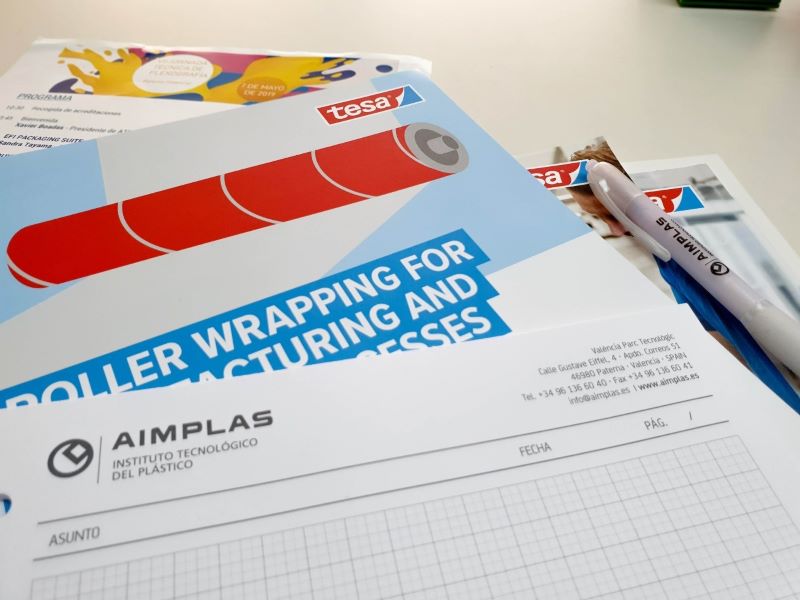On the reason of the seventh edition of the Flexography Technical Conference, on Tuesday, May 7, our technical and commercial team attended the event organized by ATEF and the Graphispack Association in which the latest developments in the flexible packaging sector were discussed.
Efi spoke to us about integration, automation and productivity, the three fundamental parts to make company costs profitable. Likewise, they explained and stressed the need to see the company as a whole for the proper functioning of the different sections or departments that may be in the organization.
Having as main axis the clear trend of the market towards the manufacture and use of flexible packaging that is respectful with the environment, Quimovil, OXEA or ESKO focused their presentations on sustainability and cost savings. In the case of Quimovil, the R&D manager spoke to us about the production of compostable or biodegradable packaging and the regulations related to the toxicity of packaging. At Oxea, they put the spotlight on propyls, which allow ink and solvent savings contributing to a more sustainable printing. Amadeu Maurel, ESKO Account Director, explained the value of simplifying the flexographic process to reduce waste. He underlined the importance of minimizing the time between work and work, since the market trend is towards an increasingly personalized product and therefore, increasingly shorter runs.
On the other hand, Dupont focused the presentation on the new competitive environment in which we find ourselves, where there is a social change, where new technologies have appeared that allow us to have greater and better access to information and where there is a greater offer of products, which causes greater competition. For all these reasons, brands must try to adapt to this demand in order to offer customers what they need, and also differentiate ourselves not only with the intrinsic characteristics of the product, but also with the added value that we can give it as a brand.
Digitization in order to optimize and integrate flexible packaging manufacturing processes and, therefore, data collection for decision-making was the support of Comexi’s presentation. In this sense, he pointed out the need for an optimal configuration of the machine to standardize the works and reduce the adjustment time between them.
To conclude, AIMPLAS focused its intervention on the new needs for use that affect the development of packaging so that they are respectful with the environment and intervene in the circular economy. In this line, she highlighted projects such as PLA4FOOD, NATAL or POLIFUN that improve the useful life of the product and that are also sustainable.
For all this, we must pay attention and prepared so that the aspects that shape the new needs of the market are addressed in the most efficient and successful way when meeting the needs and demands of our customers.


